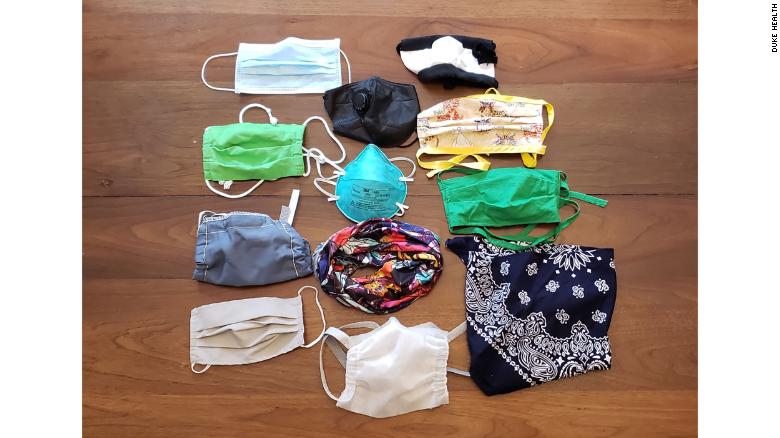Researchers created a test to determine which masks are the least effective

Schools are reopening, amusement parks are welcoming back visitors, and outdoor dining is the new way to eat out. But despite the signs that life is returning back to normal, the coronavirus pandemic has gone nowhere. That’s why a group of researchers at Duke University created a simple technique to analyze the effectiveness of various types of masks which have become a critical component in stopping the spread of the virus.
A visual aid showing how the laser beam and sheet of light work to capture respiratory droplets.”We use a black box, a laser, and a camera,” Martin Fischer, one of the authors of the study, told CNN. “The laser beam is expanded vertically to form a thin sheet of light, which we shine through slits on the left and right of the box.” In the front of the box is a hole where a speaker can talk into it. A cell phone camera is placed on the back of the box to record light that is scattered in all directions by the respiratory droplets that cut through the laser beam when they talk. A simple computer algorithm then counts the droplets seen in the video.
Neck fleeces, also called gaiter masks and often used by runners, were the least effective. In fact, wearing a fleece mask resulted in a higher number of respiratory droplets because the material seemed to break down larger droplets into smaller particles that are more easily carried away with air. Folded bandanas and knitted masks also performed poorly and did not offer much protection. “We were extremely surprised to find that the number of particles measured with the fleece actually exceeded the number of particles measured without wearing any mask,” Fischer said. “We want to emphasize that we really encourage people to wear masks, but we want them to wear masks that actually work.” While the setup of the test is quite simple — all that is required is a box, a laser for less than $200, one lens, and a cell phone camera — Fischer does not recommend people to set them up at home.